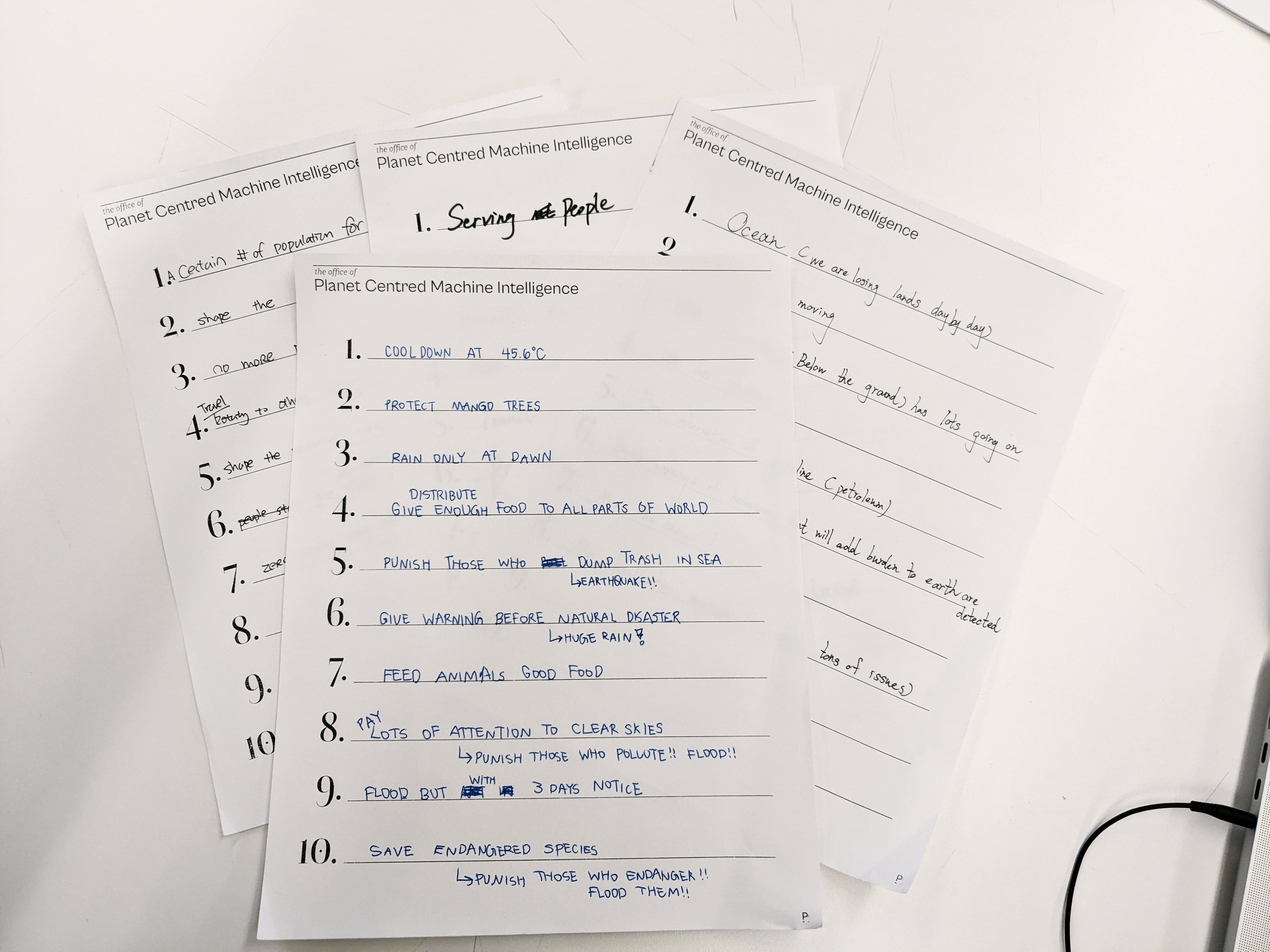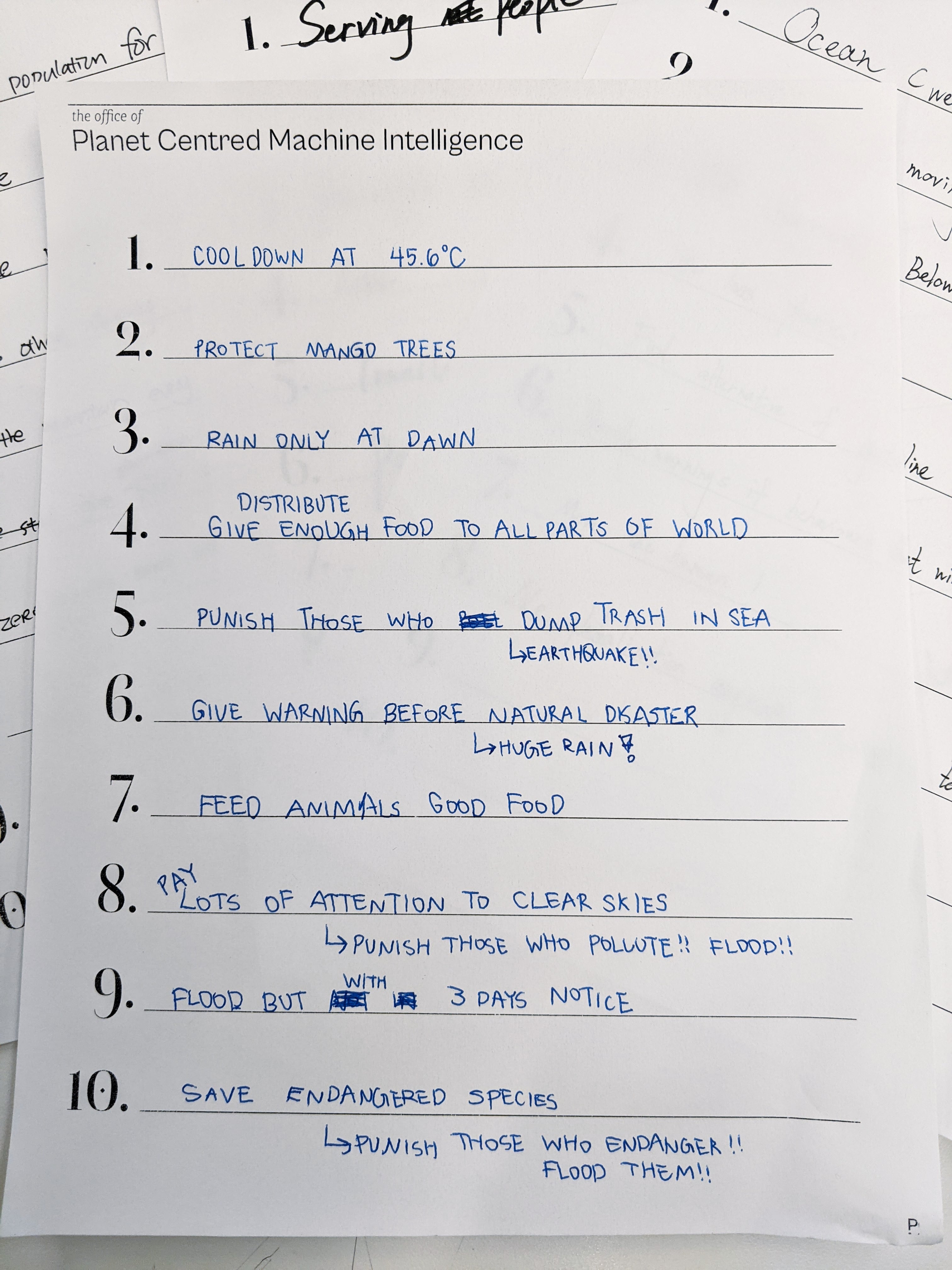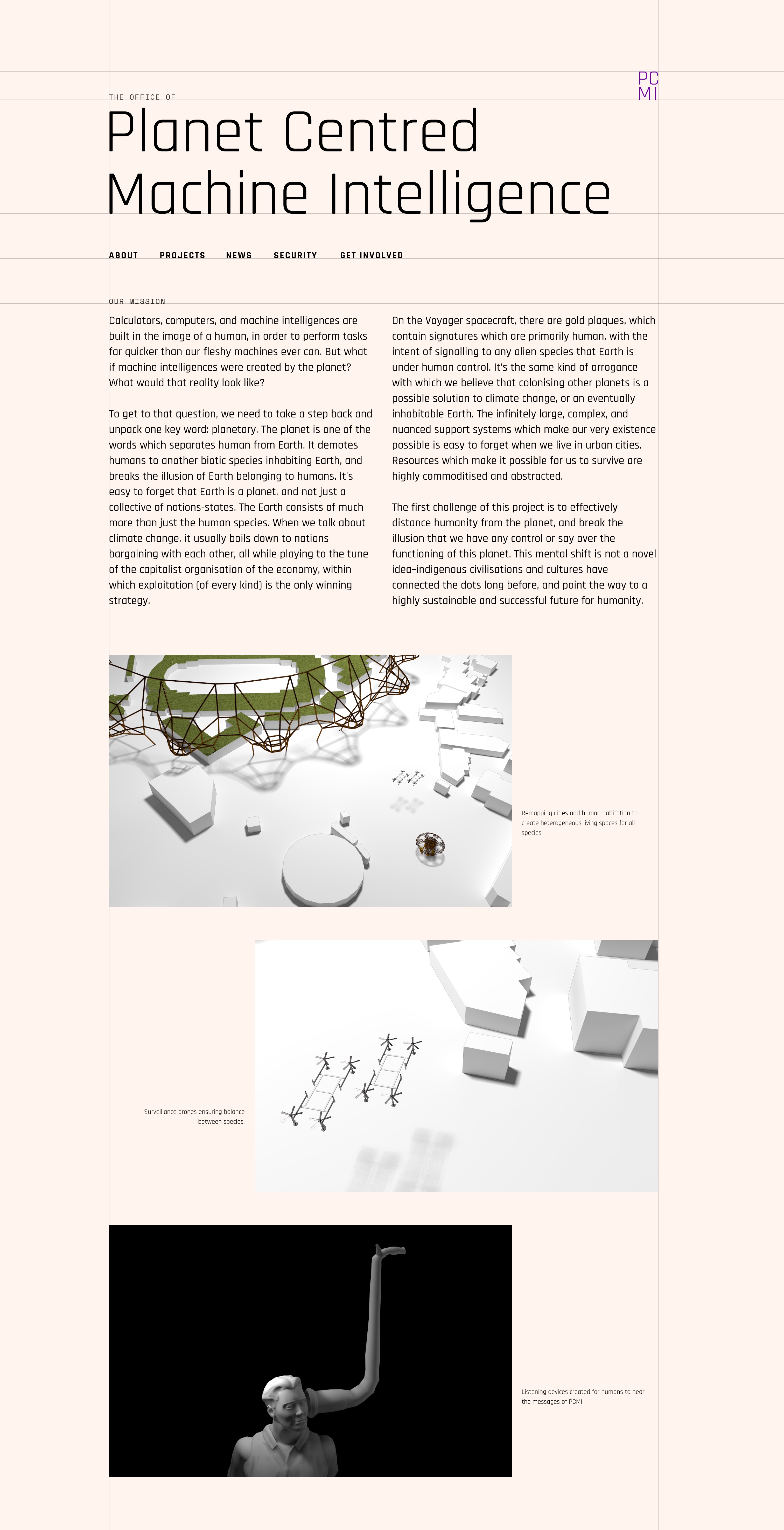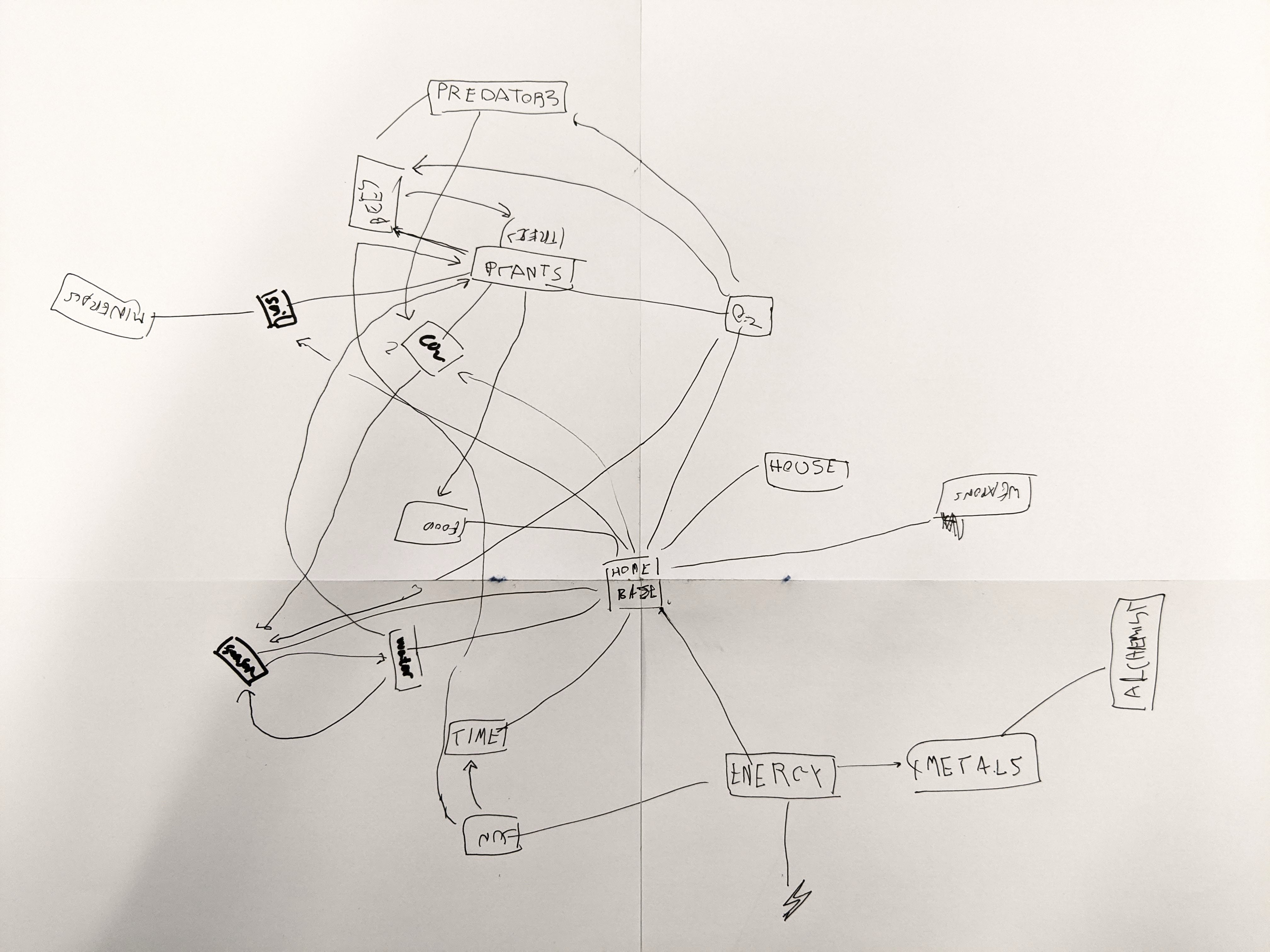User Testing Reflections
It’s fair to say that I didn’t have much to user-test, so I ended up using the sessions as a way to try out ideas and see how folks reacted to my concept. My testing plan was brief and mostly included sharing the concept and conducting a few activities to gauge reactions.
After briefly explaining the project and what I was trying to accomplish, I gave each participant a sheet with ten blank slots to fill, titled “from the office of Planetary Centred Machine Intelligence.” There’s two things being tested here. The first–asking participants to issue 10 commandments to a hypothetical Planet Centred Machine Intelligence if they were put in charge, and the second–testing out the idea of creating a fictional organisation titled ‘Planetary Centred Machine Intelligence’. The branding was a last minute inclusion, and I further explored this concept by creating a website mockup for the second test.

 The Ten Commandments of PCMI
The Ten Commandments of PCMI
The exercise of filling out the 10 commandments went fairly well. I encouraged participants to think outside the box, and gave them the liberty to be moody, or selfish. Giving them the reference of Asimov’s Three Laws of Robotics, they set about filling it out. Participants reported having fun filling out the commandments and felt that the activity helped them think through the lens of the planet and ‘other’ themselves. It fit the story I was telling and helped further the narrative. They also resonated with the branding and responded positively to the website mockup I presented. The idea of creating a fake organisation with official looking projects was perceived to be interesting, and satirical.
 Mockup of PCMI Website
Mockup of PCMI Website
The next activity was a collaborative activity, in which the participants had to work together to figure out what is needed for humans to survive. The brief was simple: Humans have just landed on a blank slate planet. A neutral canvas, a flat Minecraft world for the lack of a better analogy. We had to ideate and figure out what we’d need to survive on this new planet. We mapped out things like food, which linked to plants, which subsequently linked to water, CO2, soil, and so on and so forth. Each box drawn further branched out into new boxes. For example, plants would need soil, water, sunlight, pollinators, CO2 to produce oxygen and food. Soil would need minerals, worms and assorted organic materials. Although the session was brief, and we couldn’t get far, the intention was to highlight the vast complex systems humans depend on to survive. Humans don’t ‘own’ Earth, it’s the other way around. We would not be able to survive successfully anywhere else without the incredible complex systems on Earth keeping everything together. Even this highly simplified activity appeared to work well and the participants understood my point. It was a low fidelity activity, and it wasn’t very convincing or well conducted.
 Systems map created by participants
Systems map created by participants
In retrospect, the activities were not directly related to any prototypes, and I perhaps should have designed the session around something participants could interact with, devoid of prior context to validate my concept. By explaining the concept briefly, I might have robbed myself of truly valuable feedback. It might have been more useful to simply present visuals and record what participants felt about it. The idea of creating a fake organisation seemed interesting, and could be used to store all the materials created from the project. If I create a fairly convincing website under the moniker of ‘pcmi.org’ for example, the reaction to this organisation would be a good test of my concept. This approach does cross a few ethical lines, which I don’t mind crossing, but at the same time, a little conflicted about.
The activities used in the test could eventually be used in creating a ‘toolkit’ to help folks design their own planetary centred machine intelligences, or in the outreach work done by this ‘organisation.’